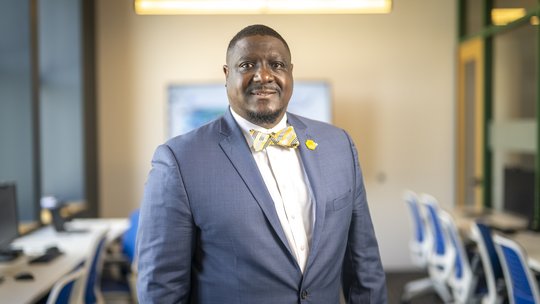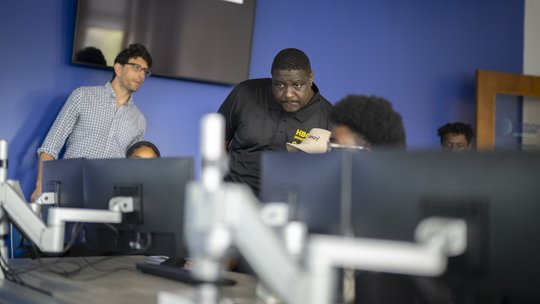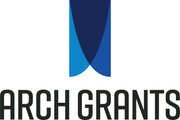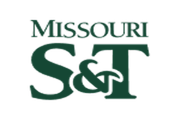
When University of the Virgin Islands student Joleen Buchanan flew to St. Louis to take part in a four-week immersion program at Harris-Stowe State University (HSSU), with support from the National Geospatial-Intelligence Agency, earlier this summer, she wasn’t sure what to expect. As the plane descended toward St. Louis, she spotted the Gateway Arch.
“The first thing I asked was, what’s that thing?” Buchanan says with a laugh. During her final weekend in St. Louis, she visited the landmark and was delighted to learn you could ride to the top. So she did — just another way the Harris-Stowe program got her out of her comfort zone this summer.
Buchanan was one of 20 students from all over the country (some, like her, were even international students) who converged in St. Louis for four weeks this summer for the third cohort of the Historically Black Colleges and Universities (HBCU) Immersion in GEOINT program. The intensive sessions are designed to “develop geospatial intelligence interest and skills in students from the nation’s HBCUs,” according to the NGA.
Harris-Stowe State University Vice President for STEM Initiatives and Research Partnerships Freddie E. Wills, Jr., Ph.D., launched the immersion program in 2022 with just eight students. Last year, he brought 10 students to St. Louis. In 2024, the program has now grown to 20 students, and Wills thinks it’s hit the sweet spot between experts in the field and up-and-coming students.
“The students participating in the program (go) back to their institutions and spread the word, but then (we also get) more attention here in the city of St. Louis around our geospatial science efforts throughout the country,” Wills says. “We’ve definitely advanced this work in opening doors to other HBCUs to understand what’s happening here in St. Louis on that front and to introduce this field of study across different HBCUs as well.”

Wills has been instrumental in adding STEM studies to the curriculum at Harris-Stowe, a historically Black university founded in 1857 as a teachers’ college, located in Midtown St. Louis. Wills says HSSU only added STEM-related majors 12 years ago, including biology, math and sustainability and ecology. His goal is to get ahead of the opening of the NGA St. Louis campus in 2026. By then, HSSU and the immersion program will have trained graduates who are ready to enter the emerging geospatial industry.
The program is open to applicants from HBCUs across the U.S. and beyond — and prior geospatial study or experience is not required. During the four-week sessions, students live on HSSU’s campus. They attend daily sessions at the university as well as at Cortex Innovation District and T-REX, where HSSU’s GeoHornet Lab and NGA’s Moonshot Labs are located.
Wills believes it’s crucial to not only position St. Louis at the forefront of this emerging and growing industry, but to foster diverse talent within it. Growing Black tech talent is something he sees as “a must.”
“The (goal) is to grow St. Louis to be the global epicenter of geospatial science and technology, and we sit here with an HBCU in our community in St. Louis, and another one in Jeff City,” Wills says. “We have to cultivate all talent, and in order to cultivate that talent for an emergent field like geospatial science, you have to introduce it to (students). We’re not going to develop that talent with just the institutions that we have here in St. Louis (right now). We have to reach outside of our walls here in the state of Missouri and the city of St. Louis, and we have to attract talent from other places, just like other major cities have done.”
Next year, Wills likely will keep the program’s cohort at 20 students to ensure they get enough individual attention from industry mentors, but he wants its reputation to continue to grow as a breeding ground for young tech talent — with Harris-Stowe and St. Louis at the forefront.
“I see this program as being a pillar for the community in St. Louis, and a pillar in higher education in general, especially among the HBCU community. I see Harris-Stowe being the HBCU to be at for geospatial science,” he says. “When people around the world think of diversity in geospatial science, the first thing (I want them) to think about is Harris-Stowe. To have something where you have built a unique brand in it is special, and I would like to see Harris-Stowe be that brand, not only locally, but nationally as well.”
Explore more stories of St. Louisans who are paving the way for geospatial careers for the next generation.
STLMade is a movement within the St. Louis metro that shines a light on the amazing things our innovative, tenacious, big-hearted people are doing. It’s supported by a region-wide collaboration of residents, local leaders, institutions, organizations, businesses big and small, and nonprofits helping to tell our story — that St. Louis is a place where you can start up, stand out and stay.



